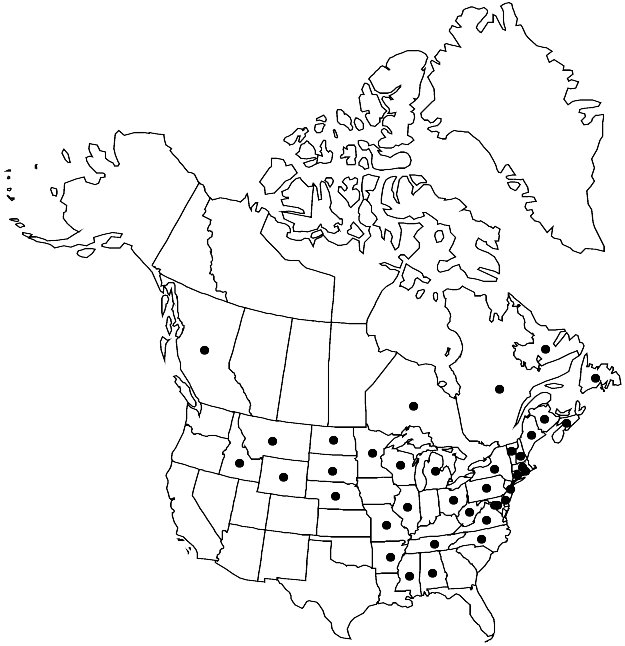Difference between revisions of "Brachythecium rutabulum"
in P. Bruch and W. P. Schimper, Bryol. Europ. 6: 15. 1853.
FNA>Volume Importer |
imported>Volume Importer |
||
| (3 intermediate revisions by 2 users not shown) | |||
| Line 1: | Line 1: | ||
{{Treatment/ID | {{Treatment/ID | ||
|accepted_name=Brachythecium rutabulum | |accepted_name=Brachythecium rutabulum | ||
| − | |accepted_authority=(Hedwig) | + | |accepted_authority=(Hedwig) Schimper |
|publications={{Treatment/Publication | |publications={{Treatment/Publication | ||
|title=in P. Bruch and W. P. Schimper, Bryol. Europ. | |title=in P. Bruch and W. P. Schimper, Bryol. Europ. | ||
| Line 9: | Line 9: | ||
|special_status={{Treatment/ID/Special_status | |special_status={{Treatment/ID/Special_status | ||
|code=F | |code=F | ||
| − | |label= | + | |label=Illustrated |
}} | }} | ||
|basionyms={{Treatment/ID/Basionym | |basionyms={{Treatment/ID/Basionym | ||
|name=Hypnum rutabulum | |name=Hypnum rutabulum | ||
|authority=Hedwig | |authority=Hedwig | ||
| + | |rank=species | ||
|publication_title=Sp. Musc. Frond., | |publication_title=Sp. Musc. Frond., | ||
|publication_place=276. 1801 | |publication_place=276. 1801 | ||
| Line 40: | Line 41: | ||
-->{{#Taxon: | -->{{#Taxon: | ||
name=Brachythecium rutabulum | name=Brachythecium rutabulum | ||
| − | + | |authority=(Hedwig) Schimper | |
| − | |authority=(Hedwig) | ||
|rank=species | |rank=species | ||
|parent rank=genus | |parent rank=genus | ||
| Line 53: | Line 53: | ||
|publication title=in P. Bruch and W. P. Schimper, Bryol. Europ. | |publication title=in P. Bruch and W. P. Schimper, Bryol. Europ. | ||
|publication year=1853 | |publication year=1853 | ||
| − | |special status= | + | |special status=Illustrated |
| − | |source xml=https:// | + | |source xml=https://bitbucket.org/aafc-mbb/fna-data-curation/src/2e0870ddd59836b60bcf96646a41e87ea5a5943a/coarse_grained_fna_xml/V28/V28_647.xml |
|genus=Brachythecium | |genus=Brachythecium | ||
|species=Brachythecium rutabulum | |species=Brachythecium rutabulum | ||
Latest revision as of 21:37, 5 November 2020
Plants large, in moderate to dense mats, green, light green, or yellowish to brownish. Stems to 10 cm, creeping to ascending, with many upright shoots in dense growth, terete-foliate, irregularly pinnate, branches to 15 mm, straight, terete-foliate. Stem leaves erect-appressed or sometimes erectopatent, closely to loosely imbricate, ovate to ovate-triangular, broadest at 1/9–1/5 leaf length, slightly to occasionally strongly concave, not to weakly plicate, 1.8–3 × 0.8–1.6 mm; base rounded, broadly or sometimes narrowly decurrent; margins plane, often recurved proximally, occasionally elsewhere, serrulate to serrate; apex short to moderately acuminate; costa to 50–75% leaf length, moderately strong, terminal spine absent, sometimes small tooth present; alar cells short-rectangular, enlarged, 30–45 × 18–23 µm, walls thin, region conspicuous, of 5–10 × 5–10 cells, pellucid; laminal cells linear, 60–140 × 7–11 µm; basal cells to 11–14 µm wide, region in 2–4 rows. Branch leaves with base often asymmetric; margins usually recurved below broadest part of leaf. Sexual condition autoicous. Seta reddish orange, 1.5–2.5(–3) cm, rough. Capsule strongly inclined to horizontal, red-brown, ovoid to elongate, curved, 2–2.5 mm; annulus separating by fragments; operculum conic. Spores 12–18 µm.
Habitat: Tree bases, rotten logs, litter and soil in forests, shaded rock, soil on lawns
Elevation: low to high elevations (0-2800 m)
Distribution

B.C., N.B., Nfld. and Labr., N.S., Ont., Que., Ala., Ark., Conn., Del., D.C., Idaho, Ill., Maine, Md., Mass., Mich., Minn., Miss., Mo., Mont., Nebr., N.H., N.J., N.Y., N.C., N.Dak., Ohio, Pa., R.I., S.Dak., Tenn., Vt., Va., W.Va., Wis., Wyo., Central America, Eurasia, n Africa, Atlantic Islands, Pacific Islands (Hawaii, New Zealand), Australia.
Discussion
Brachythecium rutabulum is a large forest moss forming rather dense, shiny mats with many crowded sympodial branches. Its robust stature and the frequent presence of sporophytes with rough setae often allow for confident field identification. Brachythecium rivulare is equally robust, but can be distinguished in the field by the somewhat dendroid appearance; the sympodial shoots in B. rivulare are usually only slightly branched proximally. Under a microscope, the distinctive inflated alar cells readily separate B. rivulare from B. rutabulum. Alar cells in B. rutabulum have a quite different appearance: they are enlarged in a group just proximal to decurrencies, whereas close to marginal cells, they are narrow and chlorophyllose. More slender plants of B. rutabulum are easy to confuse with Sciuro-hypnum curtum (see discussion under 10. S. curtum).
Selected References
None.
